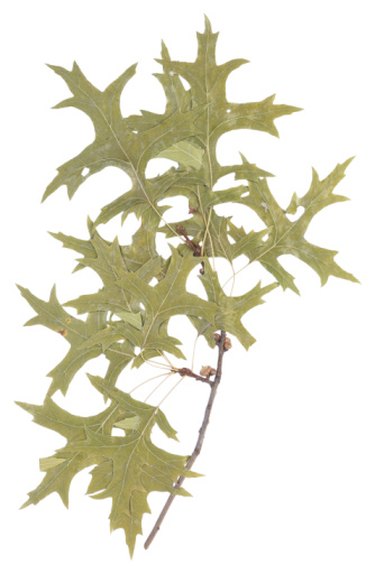
The pin oak (Quercus palustris), commonly called the swamp oak, grows in the north-central and eastern United States. It lives predominately along rivers. It thrives in bottom lands and floodplains, where it grows alongside other hardwood species. Areas where only pin oak trees grow together with no other species are commonly called "pin oak flats."
Lumber Function
Video of the Day
A popular shade tree, the pin oak grows to a height of 80 feet with a trunk diameter up to 3 feet. The wood of the tree is heavy and quite dense. The tree has the unique quality of self pruning. It can reduce its growth and discard unnecessary branches. This practice makes the wood have numerous knots, which reduces its value in the lumber industry.
Video of the Day
Benefits
Pin oak acorns contain approximately 45.4 percent total carbohydrates and 15.4 percent crude fat, according to the U.S. Forest Service's website. The acorns also have magnesium, calcium and phosphorus. They are a valued and nutritious food source of mammals and birds. Twig galls often form on the pin oak's branches and are used in the manufacture of black ink.
Considerations
The tree's rapid growth makes it ideal for reforestation projects, especially in flood regions. The tree has been known to reach approximately 60 feet in height in only 30 years, which makes it an ideal candidate for clear cutting every 40 years. The tree's acorns remain 90 percent viable for up to two years when put in cold storage.
Seed Potential
Viable seeds are produced when the pin oak reaches 20 years of age. After seed production begins a good crop is produced every three to four years. The seeds require cold stratification before germination can occur.